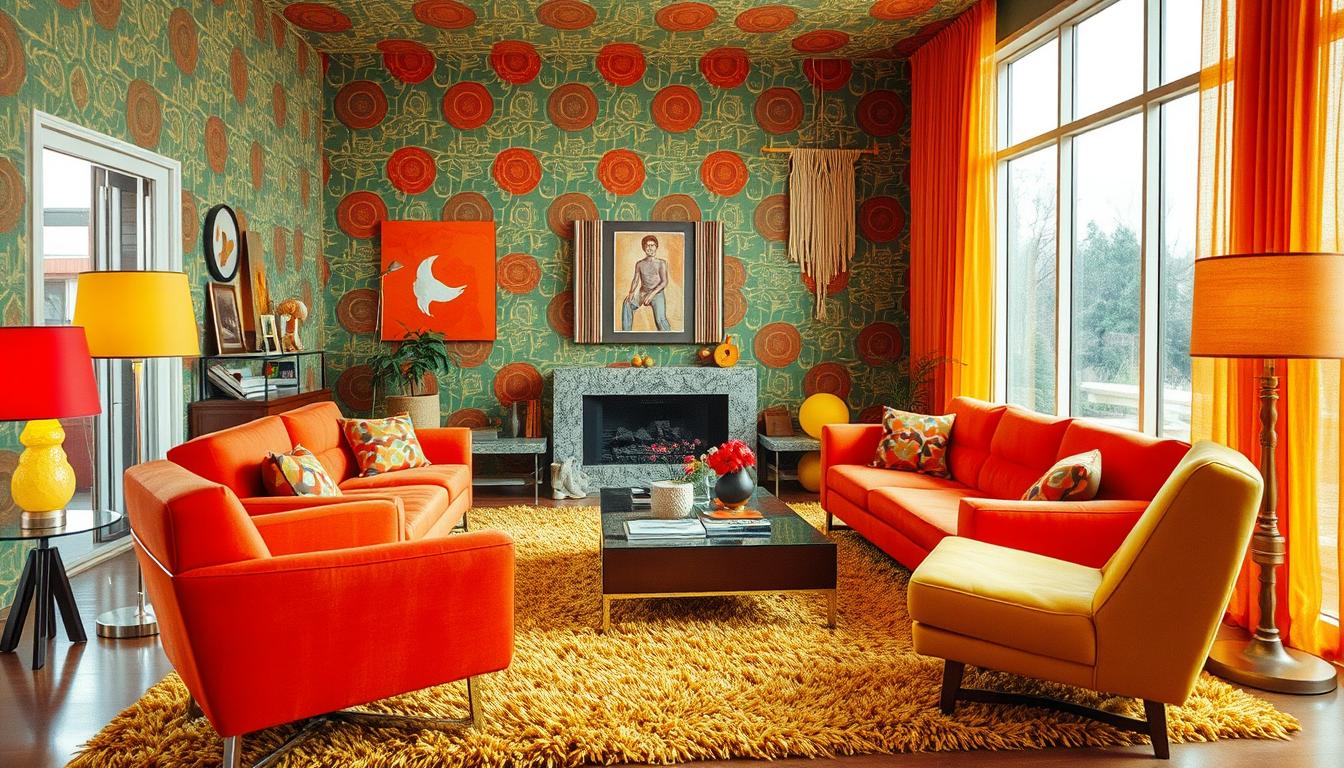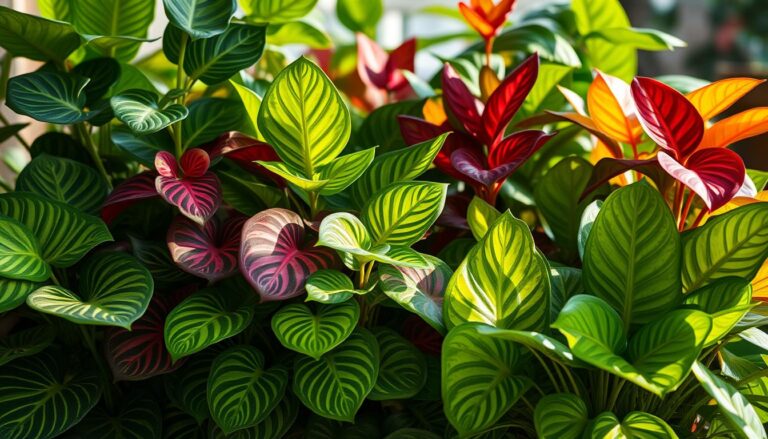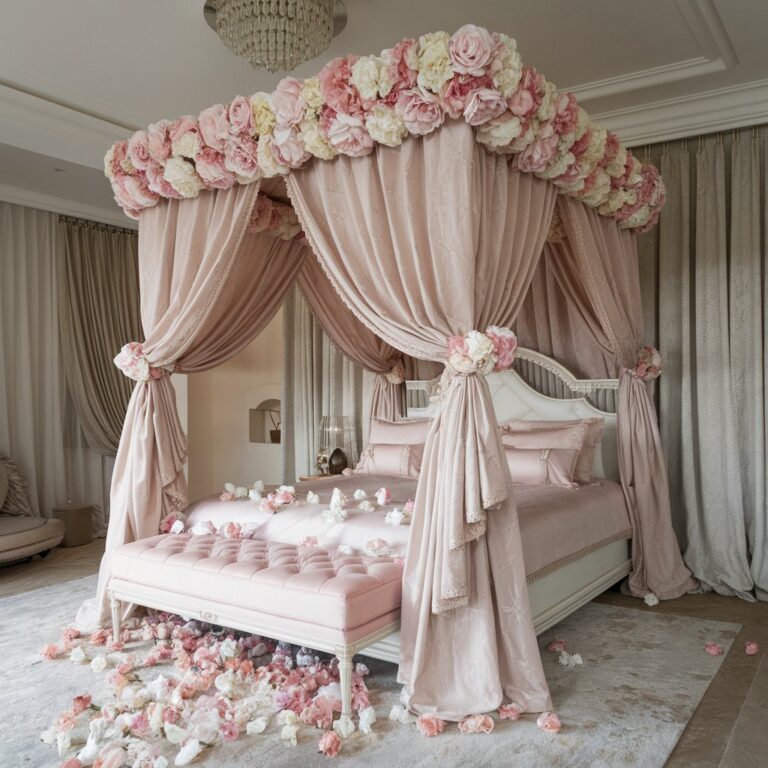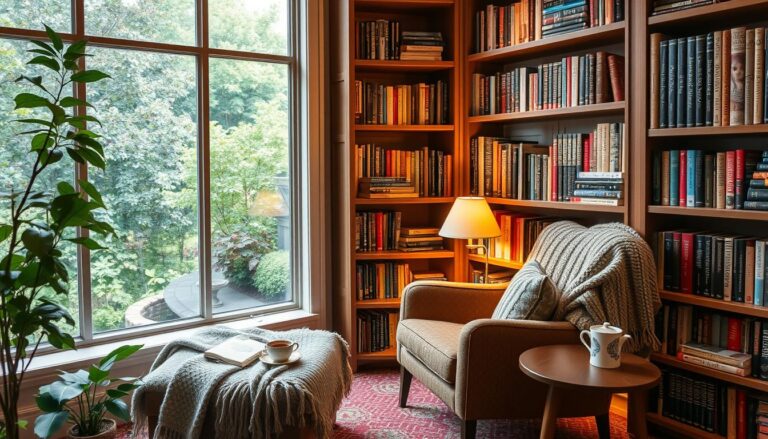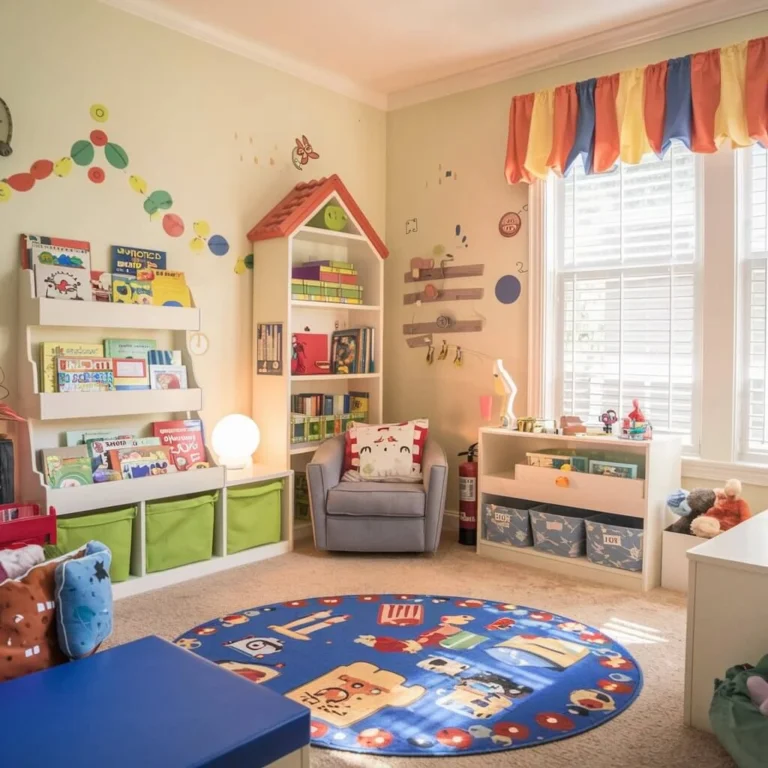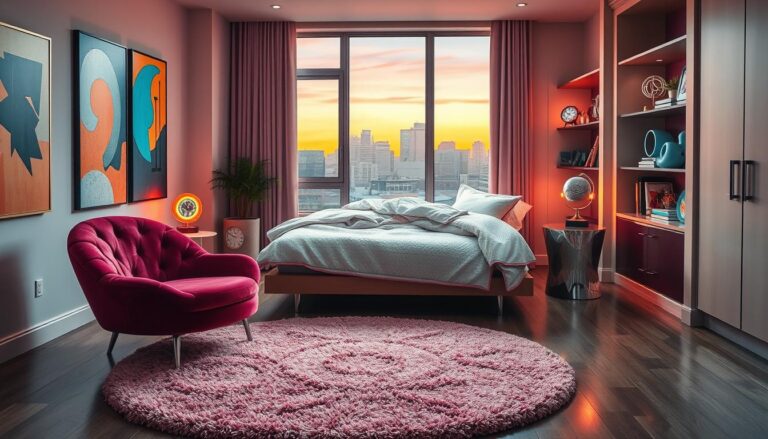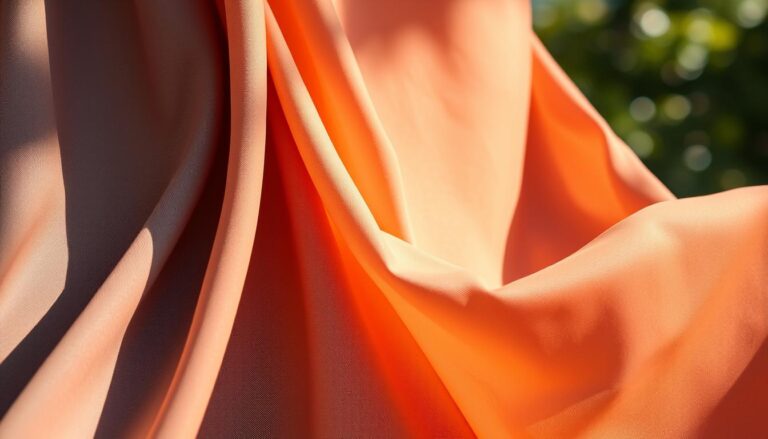1970s Interior Design: Bold Colors and Geometric Shapes
Now, 75% of homeowners in the United States are adding 1970s interior design to their homes. This trend is big because of the bold colors, geometric shapes, and vintage decor from that era. If you’re thinking about updating your home, you might wonder why 1970s design is so popular. How can you bring its unique style into your living space?
The 1970s were all about creativity and trying new things in interior design. Designers explored new colors, textures, and patterns. This led to a style that still shapes today’s interior design. Many people want to add a bit of nostalgia to their homes with vintage decor and retro touches. Whether you want a full retro room or just a few vintage pieces, knowing 1970s design is key.
Key Takeaways
- You can add 1970s interior design to your home for a nostalgic and personal touch.
- Retro design is a big trend in today’s decor, with 75% of US homeowners using 1970s elements.
- Vintage decor and bold colors bring interest to your space.
- Geometric shapes and patterns were big in 1970s design, adding a unique look.
- Knowing 1970s design helps you create a space that’s both nostalgic and modern.
- 1970s design still inspires today, making it a great choice for updating your home.
The Distinctive World of 1970s Interior Design
Exploring 1970s interior design reveals a unique mix of culture, society, and psychology. The era’s decor featured bold colors, geometric shapes, and a blend of old and new styles. This style wasn’t just about looks; it showed the era’s big changes and the need for self-expression.
The mid-century modern design, popular before the 1970s, played a big role. It focused on function, clean lines, and connecting with nature. Designers like Eames and Le Corbusier influenced the 1970s, creating a style that was both old and new. Expect to see bold colors, geometric shapes, and natural materials like wood and stone in 70s interiors.
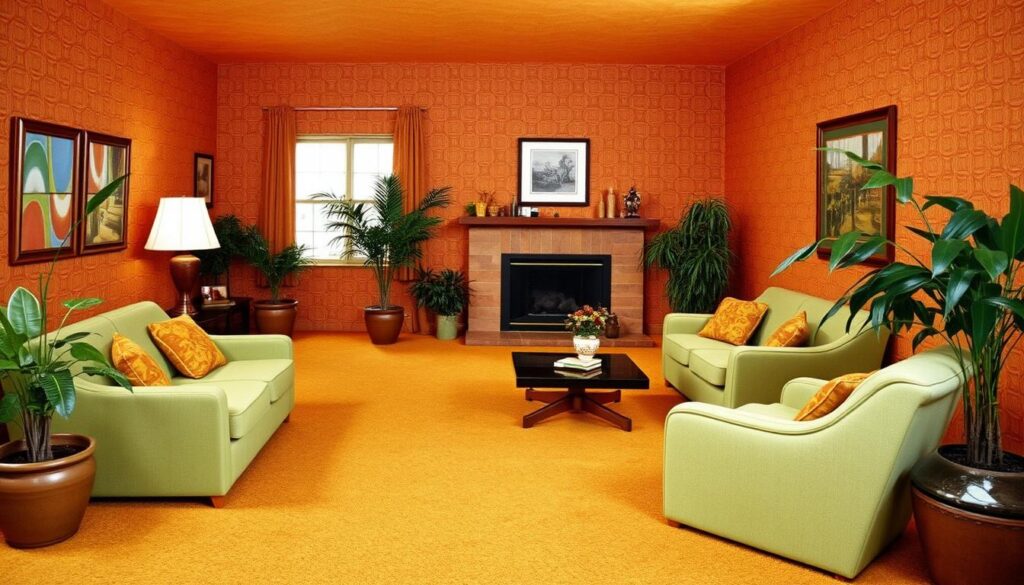
- Bold color palettes, often featuring earthy tones like brown, beige, and avocado green
- Geometric patterns, such as chevrons and hexagons, used in wallpaper, rugs, and furniture
- Mid-century modern furniture pieces, like egg-shaped chairs and sleek sofas
- Natural materials, like wood and stone, used in flooring, walls, and decorative elements
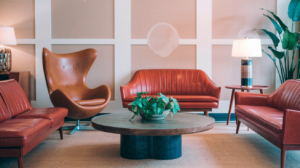
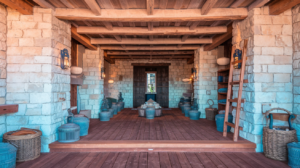
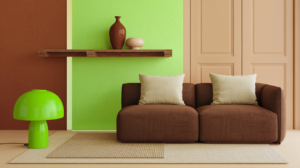
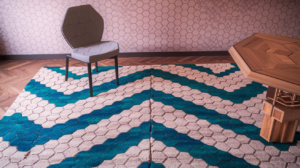
Key Characteristics of the Era
Knowing these key traits helps us appreciate the era’s design. It also helps those who want to add its style to their homes. By embracing 1970s design, you can make a space that’s unique and shows off your personality.
Cultural Influences on 70s Design
The 1970s’ cultural and social shifts greatly affected design. The rise of counterculture and women’s liberation, for example, led to bold colors and geometric patterns in homes.
Signature Color Palettes That Defined the Decade
Exploring 1970s interior design reveals unique color palettes that bring back memories. The era’s style is marked by bold, vibrant colors mixed with earthy tones and soft pastels. Colors like avocado green, harvest gold, and burnt orange are iconic and key to the decade’s charm.

These colors are more than just pretty; they connect us to the past. Using them in today’s design adds depth and personality to a room. It makes the space unique and pays tribute to the 1970s’ design legacy. Some standout color schemes from the 1970s include:
- Earth tones: beige, brown, and taupe
- Bold and bright hues: avocado green, harvest gold, and burnt orange
- Pastel shades: pale pink, baby blue, and mint green
These color palettes can be used in many ways to capture the 1970s’ eclectic design. By adding these colors to your space, you create a blend of nostalgia and modernity. It’s perfect for those who love the era’s distinct style.
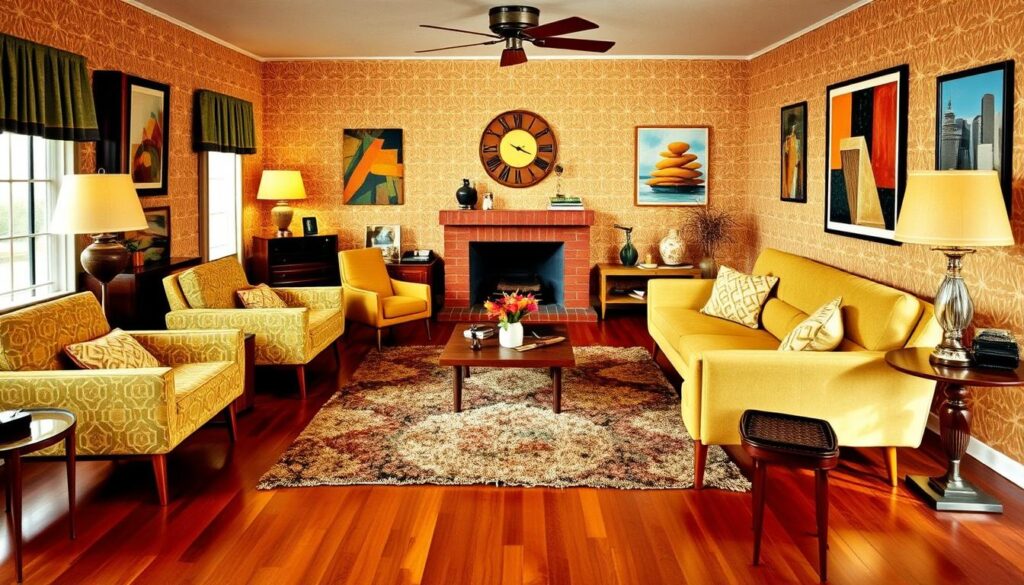
Geometric Patterns and Their Modern Revival
Geometric patterns were big in 1970s interior design. Now, they’re back in modern furniture, textiles, and decor. Adding retro furniture or accessories with these patterns can make your home groovy.
Popular 70s Pattern Styles
In the 1970s, chevrons, hexagons, and paisley were all the rage. These patterns were often in bold, bright colors. They were a key part of the era’s design.
Contemporary Interpretations
Today, designers are putting a new spin on these classic patterns. You can find them on throw pillows, wallpaper, and more. They add visual interest to any space. When mixing patterns, balance them with solid colors and neutral backgrounds for a cohesive look.
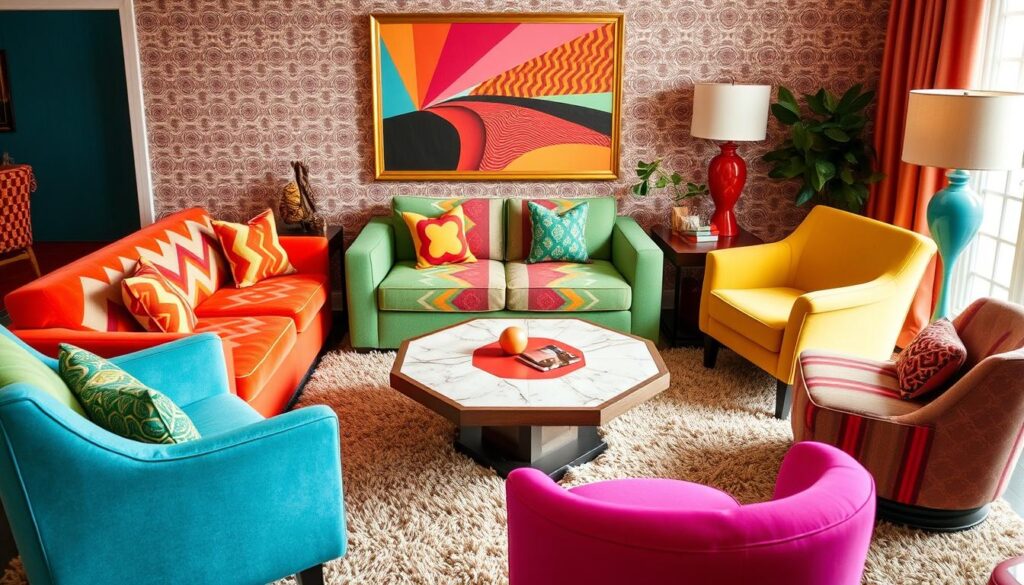
Mixing Patterns Like a Pro
To mix geometric patterns well, start with a neutral background. Then, add one or two bold pattern pieces. Throw pillows, blankets, or rugs can also add pattern and color. By using geometric patterns, you can make a space that’s unique and stylish, showing off your personality.
Essential Furniture and Décor Elements
To create a 1970s-inspired space, focus on key furniture and décor. Mid-century modern design is all about simplicity. Pieces like the egg chair and ottoman are still loved for their sleek looks and comfort.
Vintage decor adds a warm, nostalgic feel to modern spaces. Elements like macramé plant hangers and woven baskets bring a unique charm. They can make your space inviting and honor the 1970s design legacy. Here are some ways to use vintage decor:
- Use vintage textiles, like throw pillows and blankets, for color and texture
- Add vintage lighting, like pendant lamps and chandeliers, for elegance
- Showcase vintage decorative items, such as vases and sculptures, for interest
When blending mid-century modern and vintage decor, think about your desired look. Mixing different pieces can create a space that’s both nostalgic and modern. For instance, combining a vintage armchair with a modern sofa can make a cozy seating area.
| Furniture Piece | Description | Style |
|---|---|---|
| Egg Chair | Iconic chair with a sleek, curved design | Mid-century modern |
| Ottoman | Footstool or storage ottoman with a vintage vibe | Vintage decor |
| Macramé Plant Hanger | Bohemian-inspired plant hanger made from knotted rope | Vintage decor |

